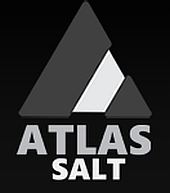 Applied Graphite outlines three anomalies at Queens
Applied Graphite outlines three anomalies at Queens
2024-09-19 13:46 ET – News Release
Mr. Don Baxter reports
APPLIED GRAPHITE REPORTS INITIAL GEOPHYSICAL SURVEY RESULTS AT THE QUEENS MINE COMPLEX
Applied Graphite Technologies Corp. has released successful results from the geophysical survey that is currently under way on the Queens mine complex (QMC) in Sri Lanka.
The preliminary geophysical survey results, from the first line, revealed three significant anomalies. One anomaly is located between the 165-metre-to-185-metre section along the profile, with a chargeability of approximately 400 millivolts per volt. The second significant anomaly is located between the 12-metre-to-30-metre section along the profile, with a chargeability of about 350 millivolts per volt. The third one is located between 100 metres and 125 metres and seems to develop below the actual limit of detection of 60 metres. All show significant extension below 60 metres. The electrode spacing is being widened to allow for depths of 300 metres or more. High chargeability, when combined with low resistivity, provides a strong geophysical signature for graphite exploration. The survey line was run over 300 metres, degrees off perpendicular to the known orientation of the graphite veins. Thus, an indication that the three anomalies may correspond to three graphite mineralized zones or swarms of graphite veins similar to the nearby Kahatagaha graphite mine, which has 32 vein systems, currently mining at 600 metres. The initial profile will be extended to the north-northeast to totally delineate the first conductive anomalies. The geophysics will now be plotted in 3-D to locate the vertical graphite veins. Graphite is very conductive, so modern geophysics is a very useful tool to map the veins to depth.
“I am pleased to see the immense success of the initial results as we are introducing new methods in detecting graphite veins in Sri Lanka,” said Don Baxter, chief executive officer. “With the combination of data from the lidar survey taken of the entire QMC area a few months ago, which gave us a baseline to build our geologic models, and the current successful geophysical results, we are provided with valuable information to improve the company’s understanding of this priority target area. As we continue to run additional lines, with electrode spacing wide enough to reach a depth of at least 300 metres, we look forward to further understanding the enormous potential of the Queens mine complex.”
Graphite veins exhibit chargeability due to the unique electrical properties of graphite and its interaction with the surrounding rock. Graphite’s high conductivity and polarizability result in a pronounced high-chargeability anomaly when subjected to an electric field as it easily facilitates electron movement and temporary charge storage. This high chargeability contrasts sharply with the lower chargeability of the surrounding rocks. During the geophysical survey, electrodes are arranged in configurations along survey lines, and an electrical current is injected into the ground. The voltage decay rate is measured and processed to create subsurface models of chargeability and resistivity. High chargeability zones, especially when correlated with low resistivity, indicate the presence of graphite veins. These anomalies are further interpreted using cross-sections and pseudo sections. The survey results are compared with surface geological maps, and high chargeability zones are targeted with drilling to confirm the presence, grade and continuity of graphite. This approach ensures accurate identification and delineation of graphite veins, leveraging the distinct chargeability response of graphite in geophysical surveys.
About Applied Graphite Technologies Corp.
Applied Graphite Technologies is developing the Queens mine complex in Sri Lanka. The QMC is on private land in the heart of the vein graphite district, with historical workings and vein graphite outcrops. Vein graphite is naturally high grade (greater-than-95-per-cent carbon content in the ground) and does not require primary processing. Testing of vein graphite in lithium-ion battery anodes has shown very high capacities, performing better than synthetic graphite. Natural vein graphite has a far superior ESG (environmental, social and governance) footprint than synthetic and is cheaper without compromising performance.
The technical information in this news release has been prepared by Dr. Christian Derosier, PGeo, MSc, DSc, a qualified person as defined in National Instrument 43-101, Standards of Disclosure for Mineral Projects.
We seek Safe Harbor.





























